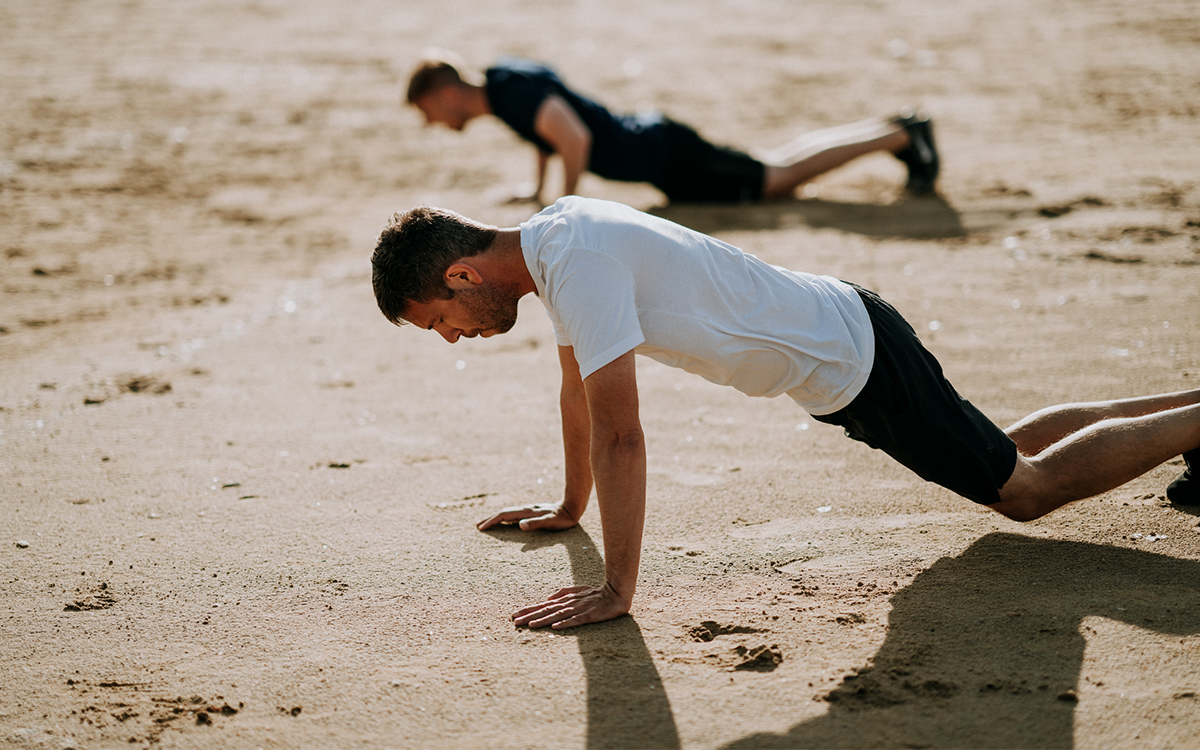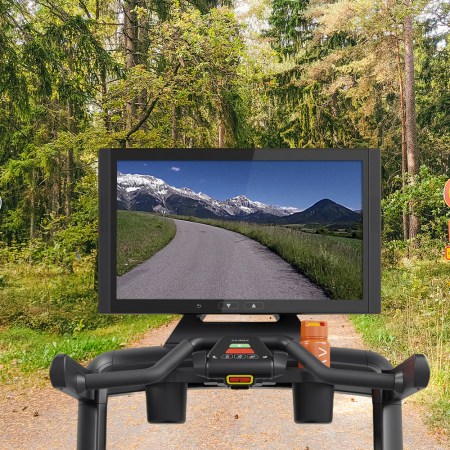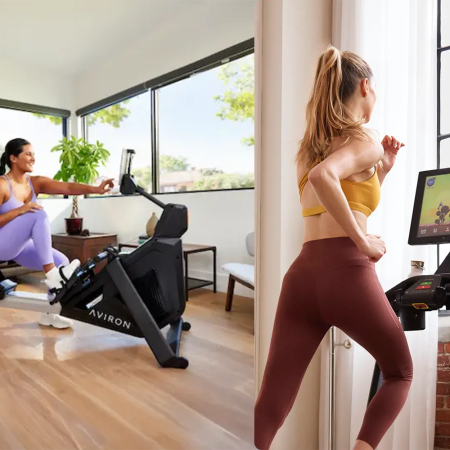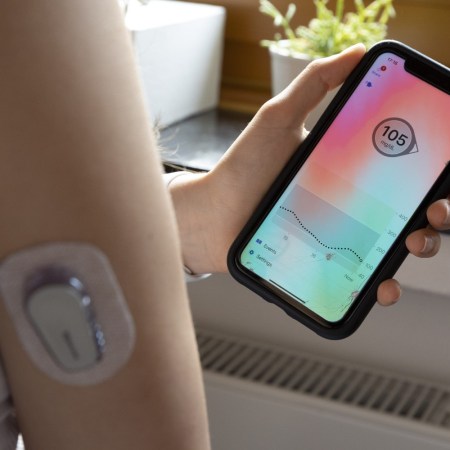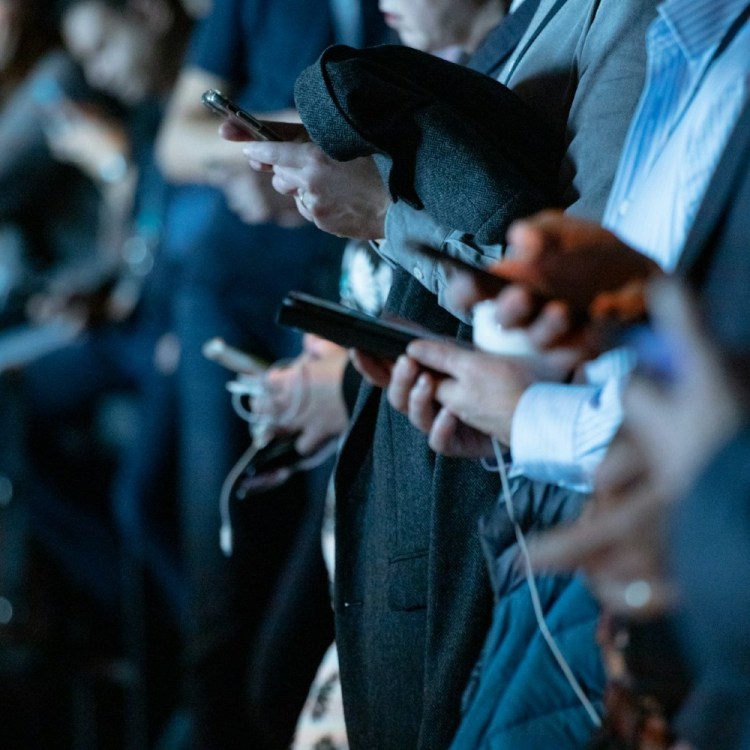Last spring, Alex Rodriguez and Jennifer Lopez rolled out of bed and headed to the gym before eating breakfast. They posted a video documenting their morning, which I’d share with you, but it was an Instagram Story and has long since disappeared. (As a consolation, here’s a photo A-Rod posted a week earlier — an engagement congrats from the Obamas.)
Whatever you think of J-Rod, the couple has as much clout in a gym as Barack and Michelle have at a dinner party; A-Rod is 44, J-Lo is 50 and neither look a day past 35. They don’t drink, regularly ditch sugar or carbs for 10-day dietary challenges and never seem to miss a workout, despite schedules that would put 99% of our Google Calendars to shame. Suffice to say, people are interested in exactly what they do to stay in shape.
On that particular April morning, they were off to sample “fasted cardio,” a regimen which — like most fitness trends — has surged and petered out in popularity over the years, earning validation from certain studies, and dubiety from others. The practice and theory are simple enough: you perform an aerobic workout on an empty stomach, and in the absence of glucose to burn (the energy you’d normally derive and store from … eating), your body will feast on fat and carbohydrates.
Aside from the whims of celebrities, another reason fasted cardio has popped back up in the wellness world as of late is its inevitable association with intermittent fasting. Most commonly practiced as a daily 16-hour fast (from, say, 8:00 at night to noon the next day), intermittent fasting — or any periodic fasting diet similar to it — is a proven method for losing weight, reducing body fat, lowering blood pressure and, according to celebrated geneticist David Sinclair, activating our “longevity genes,” which encourage longer, healthier lifespans.
Fitness nuts are wont to sample all sorts of trends and practices. But occasionally, juggling too many can create a wellness logjam. Consider what happens when an intermittent faster becomes a morning workout person (or vice versa). It’s easy to list arguments for each (calorie restriction retrains our bodies in an age of overconsumption, pre-work exercise releases endorphins that improve mood), but combining the two essentially necessitates fasted cardio.
And that’s less than ideal.
Related: How to Become a Morning Workout Person
Fasted cardio is okay to try once in a while, but it’s ultimately more effective if you once hit 697 home runs or can do this, and have a dedicated personal nutritionist to make sure that the second your fast is broken, you’re not filling your hole with buttered bagels and chocolate chip muffins. Which isn’t easy: fasted cardio sessions carry the danger of “bonking,” a lightheadedness that is directly related to dangerously low levels of blood sugar, and also run the risk of burning through protein as your body desperately grasps for something to burn. And if you’re middle-aged and need more protein than you did in your youth, keep in mind that your body’s already been working overtime to maintain blood-glucose levels while you sleep. Jumping into a gym without any form of sustenance in the morning will hurt your muscle mass and then lead you to make unhealthy decisions for “breakfast” afterwards. It’s a frustratingly self-defeating cycle.
Not to mention, one of the best workouts you can do in 2020 (there’s a rare amount of unanimity on this, considering) is high-intensity interval training, and fasting before a legit HIIT workout is not an option. HIIT alternates bursts of all-out anaerobic exercise with 50%-effort cooldowns. The workouts include high knee runs, burpees, mountain climbers, medicine ball twists and all manner of rows alongside old reliables like push-ups and lunges, and are often completed in 30 minutes or less. Studies have shown that HIIT can improve your VO2 max (the amount of oxygen you can utilize during exercise — more is better) more effectively than traditional endurance training. It’s a fat-burning no-brainer, but only if you’re actually performing at high intensity.
It’s entirely plausible that fasted cardio disciples, alongside “accidental” fasted cardioers (morning workout people who don’t eat their first meal until noon) believe they’re getting good workouts. They’re exhausted at the end of every high-octane class, right? But HIIT without at least a banana is like running sprints in Red Wing boots. Fueling up is imperative, and could provide a huge difference in energy. Besides, anything you eat will be eliminated by the afterburn effect, a metabolism-catalyzing process that comes into play after a really tough workout.
Our prescription? Apply various fitness practices on various days. HIIT works best after you’ve loaded up on carbohydrates and had a couple hours to digest; perhaps you can find a class right after work. (Don’t wait too late though — you don’t want your heart rate too high too close to bedtime.) Morning workouts, meanwhile, can vibe with intermittent fasting as long as the fasted cardio is on the lighter side, aerobically. Think wake-up sessions of tennis, basketball, jogging or swimming. If you’re determined to get morning workouts in and are spooked that working out on an empty stomach is a so-so idea (scientifically speaking), just make a point to eat precise foods in small amounts. Think: a banana with a dollop of peanut butter, yogurt and granola, a handful of nuts, energy bars you can trust, like Sakara or Rx.
The key on any fitness journey, excuse the ever-trotted cliche, is settling on a personal brand of balance. The key details of your daily life — how long your commute takes, how many hours a day you spend sitting, how much you ate for lunch — are entirely your own; why then, do we so often insist on absentmindedly slotting in fitness trends espoused by those with schedules (and bank accounts) entirely different than our own? If calorie restriction is your thing, then bless you, that’s hard to do. But as getting out of bed is hard enough — just make sure you’re getting your money’s worth at those morning workouts, too.
Related: What’s the Healthiest Energy Bar? We Asked a Nutritionist.
The Charge will help you move better, think clearer and stay in the game longer. Subscribe to our wellness newsletter today.
